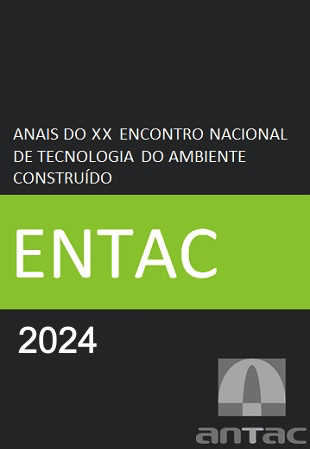Lean philosophy applied to BIM
A case study of a linear Infrastructure Project
DOI:
https://doi.org/10.46421/entac.v20i1.5810Keywords:
BIM, LEAN, Management, Infrastructure, Engineering, Digital EngineeringAbstract
This study aims to present the application of Lean philosophy practices in the development of linear urban infrastructure projects using Building Information Modeling (BIM), aiming to optimize the process. Two methodological approaches were adopted: a literature review and a case study to explore the integration of Lean into BIM. The results indicate that integrating the Lean philosophy into the information model development process provided benefits at all stages of the project's life cycle, significantly improving the workflow towards the client's desired value and structuring activities with a focus on the differentials of an efficient BIM process: automation, standardization, waste reduction, and professional appreciation. This study contributes to the field of digital engineering by demonstrating how the Lean philosophy can be effectively integrated into BIM projects, suggesting a model that can be replicated in other urban infrastructure initiatives, enhancing the benefits of BIM, and promoting a culture of continuous improvement.
References
J. P. WOMACK, D. T. JONES e D. ROOS, A máquina que mudou o mundo: A história da produção enxuta – a arma secreta da Toyota
nas guerras automobilísticas globais que agora está revolucionando a indústria mundial ., Simon e Schuster, 2007.
R. Sacks, C. Eastman, G. Lee e P. Teicholz, Manual de BIM, Porto Alegre: Bookman, 2021.
L. H. G. B. G. &. T. I. Koskela, “The foundations of lean construction. In Design and construction,” 2002.
D. O'Sullivan e D. Kashiwagi, “The integration of BIM and Lean in construction projects: A literature review,” 2019.
R. M. e. S. Paavola, “Beyond the BIM utopia: Approaches to the development and implementation of building information
modeling.,” 2014.
S. Azhar, “Building Information Modeling (BIM): Trends, Benefits, Risks, and Challenges for the AEC Industry. Leadership and
Management in Engineering,” 2011.
R. VOLK, J. STENGEL e F. SCHULTMANN, Building Information Modeling (BIM) for existing buildings—Literature review and future
needs - Automation in construction,, 2014.
B. Succar, “Building information modelling framework: A research and delivery foundation for industry stakeholders. Automation
in Construction,” 2009.
M. ROTHER e J. SHOOK, Learning to see: value stream mapping to add value and eliminate muda, Lean enterprise institute, 2003.
J. K. Liker, “The Toyota Way: 14 Management Principles from the World's Greatest Manufacturer,” 2004.
T. OHNO, Toyota production system: beyond large-scale production, Productivity press, 2019.
S. Shingo, A study of the Toyota production system: From an Industrial Engineering Viewpoint., 2019.
M. Imai, Kaizen: The Key to Japan's Competitive Success., McGraw-Hill Education., 1986.
R. e. a. Sacks, Parametric tools and construction management: a case study of BIM implementation in construction., 2010.
I. Motawa e A. Almarshad, A knowledge-based BIM system for building maintenance. Automation in Construction, 2013.

